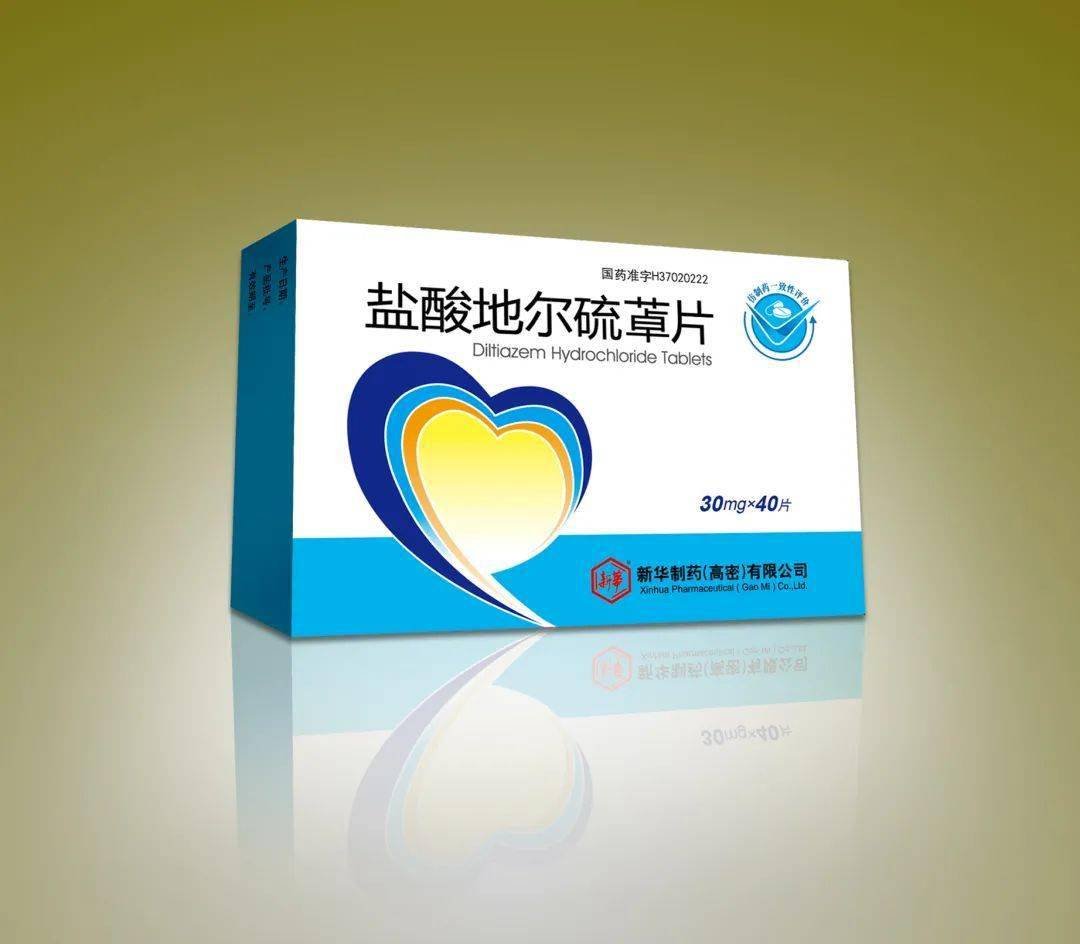Diltiazem tablets
Effects and efficacy: Mainly used for angina pectoris, hypertension and hypertrophic cardiomyopathy; various arrhythmias; myocardial infarction.
Usage and dosage: Oral angina pectoris: The starting dose for adults is 60 mg of ordinary tablets once, 3 times a day or 30 mg once, 4 times a day, which can be increased to 360 mg once a day if necessary. Sustained-release tablets (capsules) are 90-180 mg once a day. Once a day. Hypertension: Sustained-release tablets (capsules), starting dose 60-120 mg once, 2 times a day, and the maximum dose can reach 360 mg once a day if necessary. Intravenous supraventricular tachycardia single intravenous injection: The usual adult dose is 10 mg, which is injected slowly intravenously over about 3 minutes, and can be appropriately increased or decreased according to age and symptoms. Emergency treatment of abnormal hypertension during surgery single intravenous injection: Usually 10 mg is injected slowly intravenously for adults once in about 1 minute, and can be appropriately increased or decreased according to the patient’s age and symptoms. Intravenous drip, usually for adults at a rate of 5-15μg/kg per minute. When blood pressure drops to the target value, monitor the blood pressure and adjust the drip rate. Hypertensive emergencies are intravenously dripped at a rate of 5-15μg/kg per minute. When blood pressure drops to the target value, monitor the blood pressure and adjust the drip rate. Unstable angina is intravenously dripped at a rate of 1-5μg/kg per minute. The starting dose for arrhythmias is 250μg/kg, which is injected intravenously within 2 minutes; if necessary, 350μg/kg is given after 15 minutes. Subsequent doses should be individualized according to the patient’s condition. In patients with atrial fibrillation or atrial flutter, further slowing of the heart rate can be achieved by intravenous drip after the first drug push. The initial drip rate is 5-10mg/h, which can be increased to a maximum of 15mg/h (increase of 5mg/h) if necessary. The intravenous drip can be maintained for up to 24 hours.
Adverse reactions:
Common adverse reactions: edema, headache, nausea, dizziness, rash, weakness. Rare adverse reactions (<1%) Cardiovascular system Angina pectoris, arrhythmia, atrioventricular block, bradycardia, bundle branch block, congestive heart failure, abnormal electrocardiogram, hypotension, palpitations, syncope, tachycardia, ventricular premature beats. Nervous system Dreaminess, amnesia, depression, abnormal gait, hallucinations, insomnia, nervousness, paresthesia, personality changes, drowsiness, tremor. Digestive system Anorexia, constipation, diarrhea, taste disorders, indigestion, thirst, vomiting, weight gain, mild increase in alkaline phosphatase, lactate dehydrogenase, aspartate aminotransferase, and alanine aminotransferase. Skin petechiae, photosensitivity, itching, and urticaria. Others: amblyopia, elevated CPK, dry mouth, dyspnea, epistaxis, irritability, hyperglycemia, hyperuricemia, impotence, muscle spasm, nasal congestion, polyuria, increased nocturia, tinnitus, osteoarthritis, hair loss, erythema multiforme, extrapyramidal syndrome, gingival hyperplasia, hemolytic anemia, prolonged bleeding time, leukopenia, purpura, retinopathy, thrombocytopenia, exfoliative dermatitis.
Drug contraindications:
Allergic to this product is prohibited. Use with caution during lactation and children.
Share:
Products
Our offers
Health Classification
Let us work together to protect precious health






























